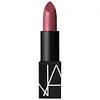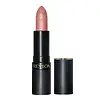What's inside
What's inside
 Key Ingredients
Key Ingredients

 Benefits
Benefits

 Concerns
Concerns

 Ingredients Side-by-side
Ingredients Side-by-side

Dimethicone
EmollientSynthetic Wax
AbrasivePolyethylene
AbrasiveIsohexadecane
EmollientHydrogenated Polyisobutene
EmollientDimethicone/Vinyl Dimethicone Crosspolymer
Skin ConditioningMicrocrystalline Wax
Emulsion StabilisingKaolin
AbrasiveEuphorbia Cerifera Wax
Sorbitan Sesquiisostearate
EmulsifyingCetearyl Dimethicone Crosspolymer
Tocopheryl Acetate
AntioxidantPassiflora Edulis Seed Oil
EmollientMoringa Oleifera Seed Oil
EmollientTocopherol
AntioxidantPolysilicone-11
Disteardimonium Hectorite
StabilisingHydroxyapatite
AbrasiveButyrospermum Parkii Butter
Skin ConditioningIsopropyl Titanium Triisostearate
EmollientPropylene Carbonate
SolventSimethicone
EmollientBHT
AntioxidantPhenoxyethanol
PreservativeAroma
Linalool
PerfumingCitronellol
PerfumingLimonene
PerfumingCI 77163
Cosmetic ColorantCI 42090
Cosmetic ColorantCI 77491
Cosmetic ColorantCI 77492
Cosmetic ColorantCI 77499
Cosmetic ColorantMica
Cosmetic ColorantCI 45410
Cosmetic ColorantCI 17200
Cosmetic ColorantCI 15850
Cosmetic ColorantCI 77891
Cosmetic ColorantCI 19140
Cosmetic ColorantCI 15985
Cosmetic ColorantDimethicone, Synthetic Wax, Polyethylene, Isohexadecane, Hydrogenated Polyisobutene, Dimethicone/Vinyl Dimethicone Crosspolymer, Microcrystalline Wax, Kaolin, Euphorbia Cerifera Wax, Sorbitan Sesquiisostearate, Cetearyl Dimethicone Crosspolymer, Tocopheryl Acetate, Passiflora Edulis Seed Oil, Moringa Oleifera Seed Oil, Tocopherol, Polysilicone-11, Disteardimonium Hectorite, Hydroxyapatite, Butyrospermum Parkii Butter, Isopropyl Titanium Triisostearate, Propylene Carbonate, Simethicone, BHT, Phenoxyethanol, Aroma, Linalool, Citronellol, Limonene, CI 77163, CI 42090, CI 77491, CI 77492, CI 77499, Mica, CI 45410, CI 17200, CI 15850, CI 77891, CI 19140, CI 15985
Diisopropyl Dimer Dilinoleate
EmollientIsononyl Isononanoate
EmollientOzokerite
Emulsion StabilisingAluminum Starch Octenylsuccinate
AbsorbentOctyldodecyl Neopentanoate
EmollientSilica
AbrasiveMica
Cosmetic ColorantNylon-12
Kaolin
AbrasiveSynthetic Wax
AbrasiveCopernicia Cerifera Cera
EmollientMoringa Oleifera Seed Oil
EmollientTheobroma Grandiflorum Seed Butter
Skin ConditioningCaprylic/Capric Triglyceride
MaskingAgave Rigida Extract
Hydrogenated Polyisobutene
EmollientAnemarrhena Asphodeloides Root Extract
Skin ConditioningCera Microcristallina
Emulsion StabilisingEthylene/Propylene Copolymer
AbrasivePolyethylene
AbrasiveBHT
AntioxidantPhenoxyethanol
PreservativeBlue 1 Lake
Cosmetic ColorantIron Oxides
CI 45410
Cosmetic ColorantCI 17200
Cosmetic ColorantCI 15850
Cosmetic ColorantCI 77891
Cosmetic ColorantCI 19140
Cosmetic ColorantDiisopropyl Dimer Dilinoleate, Isononyl Isononanoate, Ozokerite, Aluminum Starch Octenylsuccinate, Octyldodecyl Neopentanoate, Silica, Mica, Nylon-12, Kaolin, Synthetic Wax, Copernicia Cerifera Cera, Moringa Oleifera Seed Oil, Theobroma Grandiflorum Seed Butter, Caprylic/Capric Triglyceride, Agave Rigida Extract, Hydrogenated Polyisobutene, Anemarrhena Asphodeloides Root Extract, Cera Microcristallina, Ethylene/Propylene Copolymer, Polyethylene, BHT, Phenoxyethanol, Blue 1 Lake, Iron Oxides, CI 45410, CI 17200, CI 15850, CI 77891, CI 19140
 Reviews
Reviews

Ingredients Explained
These ingredients are found in both products.
Ingredients higher up in an ingredient list are typically present in a larger amount.
BHT is a synthetic antioxidant and preservative.
As an antioxidant, it helps your body fight off free-radicals. Free-radicals are molecules that may damage your skin cells.
As a preservative, it is used to stabilize products and prevent them from degrading. Specifically, BHT prevents degradation from oxidation.
The concerns related to BHT come from oral studies; this ingredient is currently allowed for use by both the FDA and EU.
However, it was recently restricted for use in the UK as of April 2024.
Learn more about BHTCi 15850 is the pigment color red. It is an azo dye and created synthetically.
Azo dyes need to be thoroughly purified before use. This allows them to be more stable and longer-lasting.
This ingredient is common in foundations, lipsticks, and blushes. This color is described as brown/orangey red.
It has many secondary names such as Red 6 and Red 7. According to a manufacturer, Red 6 usually contains aluminum.
Learn more about CI 15850Ci 17200 is a synthetic reddish-purple dye.
CI 19140 is also known as Tartrazine. Tartrazine is a synthetic dye used in cosmetics, foods, and medicine to add a yellow color.
Tartrazine is created from petroleum and is water-soluble.
Some people may experience allergies from this dye, especially asthmatics and those with an aspirin intolerance.
Learn more about CI 19140CI 45410 is a synthetic red-pigment and dye.
It often goes by both Red 28 or Red 27; manufacturers label both ingredients as CI 45410.
This dye is commonly found in makeup because it imparts a vivid color. Some types of this dye change color based on pH level and interaction with moisture:
Your skin has a natural pH of around 4.5 - 5.5.
According to the FDA, CI 45410 is not permitted for use in eye products.
Red 27 is a flourescein dye and commonly used as a fluorescent tracer in medicine.
Learn more about CI 45410Ci 77891 is a white pigment from Titanium dioxide. It is naturally found in minerals such as rutile and ilmenite.
It's main function is to add a white color to cosmetics. It can also be mixed with other colors to create different shades.
Ci 77891 is commonly found in sunscreens due to its ability to block UV rays.
Learn more about CI 77891Hydrogenated Polyisobutene is a synthetic polymer. Polymers are compounds with high molecular weight. Hydrogenated Polyisobutene is an emollient and texture enhancer.
In one study, Hydrogenated Polyisobutene showed better skin hydration levels than Caprylic/Capric Triglyceride. As an emollient, it helps keep your skin soft and hydrated by trapping moisture in.
Hydrogenated Polyisobutene is often used as a mineral oil replacement.
Learn more about Hydrogenated PolyisobuteneKaolin is a clay. It is used for oil control and to help minimize pores. Like other clays, kaolin has the ability to absorb excess sebum or oil. This can help clean out pores and mattify the skin.
Some types of kaolin may have exfoliating properties. When water is added to kaolin, it becomes a paste with small abrasive particles.
Most kaolin is a white color, but may be pink/orange/red depending on where it comes from.
The name 'kaolin' comes from a Chinese village named 'Gaoling'. Kaolin clay comes from rocks rich in kaolinite. Kaolinite, the mineral, has a silicate layered structure. Kaolinite is formed from chemical weathering of aluminum siilicate minerals.
Besides skincare, kaolin is commonly used to make glossy paper, in ceramics, toothpaste, and as medicine to soothe stomach issues.
Learn more about KaolinMica is a naturally occurring mineral used to add shimmer and color in cosmetics. It can also help improve the texture of a product or give it an opaque, white/silver color.
Serecite is the name for very fine but ragged grains of mica.
This ingredient is often coated with metal oxides like titanium dioxide. Trace amounts of heavy metals may be found in mica, but these metals are not harmful in our personal products.
Mica has been used since prehistoric times throughout the world. Ancient Egyptian, Indian, Greek, Roman, Aztec, and Chinese civilizations have used mica.
Learn more about MicaMoringa Oleifera Seed Oil is the oil expressed from the seeds of Moringa oleifera plant. It is more commonly known as Moringa seed oil.
Moringa seeds have antioxidant, anti-inflammatory, and skin hydrating properties. These seeds are rich in oils, proteins, monounsaturated fats, and tocopherols.
As an emollient, moringa seed oil helps trap moisture in the skin by creating a film on top. This helps keep your skin hydrated and soft.
Many compounds in moringa seed oil are antioxidant and anti-inflammatory. These compounds include Vitamin E. , catechins, ferulic acid, and more.
Another compound found in Moringa seed oil is oleic acid.
Moringa trees are native to the Himalayan mountains.
This ingredient may not be fungal-acne safe.
Learn more about Moringa Oleifera Seed OilPhenoxyethanol is a preservative that has germicide, antimicrobial, and aromatic properties. Studies show that phenoxyethanol can prevent microbial growth. By itself, it has a scent that is similar to that of a rose.
It's often used in formulations along with Caprylyl Glycol to preserve the shelf life of products.
Polyethylene is a synthetic ingredient that helps the skin retain moisture. It is a polymer.
It is also typically used within product formulations to help bind solid ingredients together and thicken oil-based ingredients. When added to balms and emulsions, it helps increase the melting point temperature.
Synthetic Wax is created from fossil fuels such as natural gas. It is used to enhance texture, adjust pH, and as an occlusive.
It may also be used as an abrasive ingredient to exfoliate the skin.
Synthetic Wax may not be fungal acne safe.
Learn more about Synthetic Wax